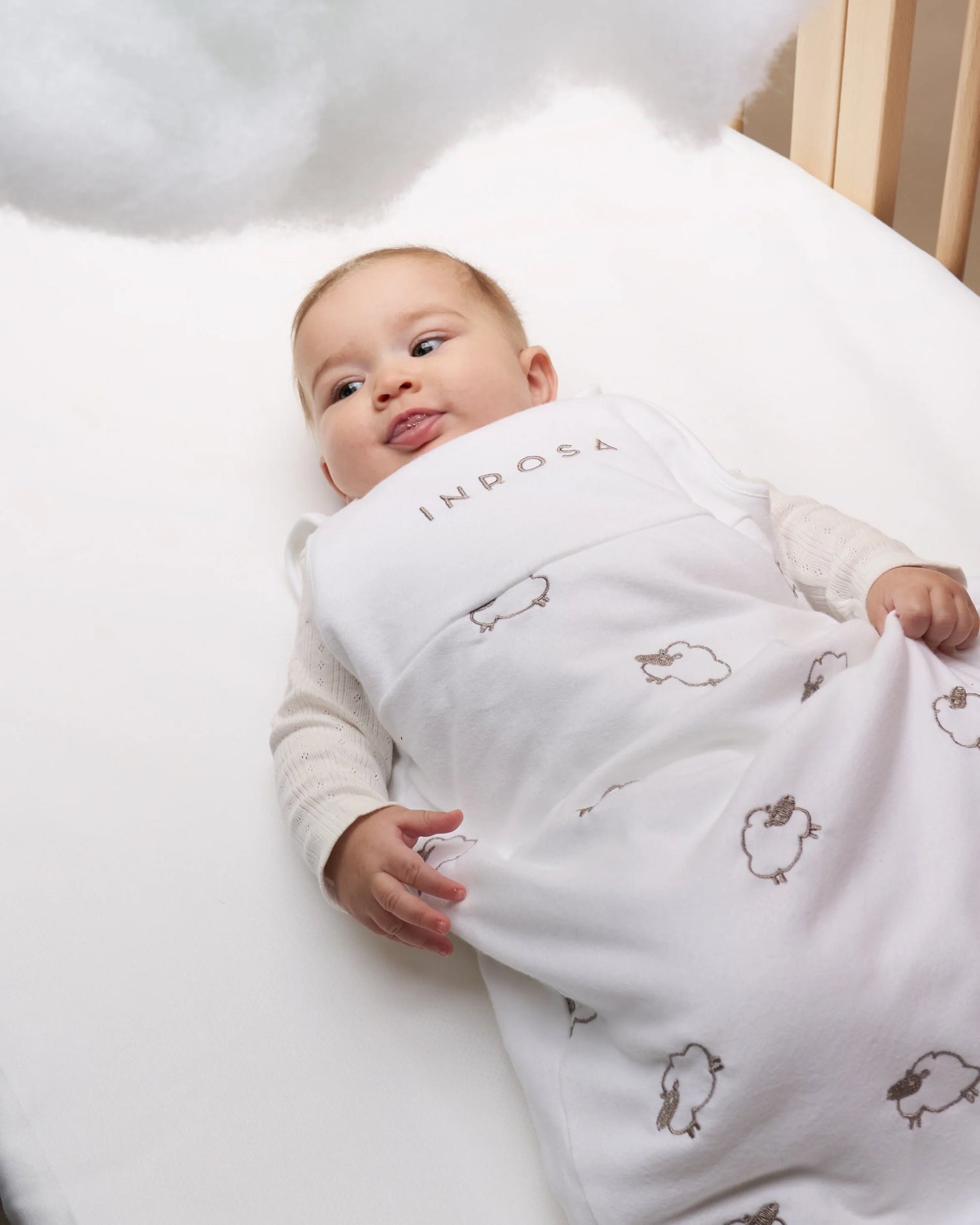Baby safety during sleep is a top priority for every parent.
In this article, we will look at the essentials for ensuring a safe sleep environment, with a focus on the crib and how to avoid common risks associated with newborn sleep.
Tips for a safe sleep:
- The baby should sleep in the same room as the parents at least until the first 6 months, but on a separate surface .
- Make sure the crib mattress is firm, flat and not slanted.
- Avoid letting the child sleep in the parents' bed, on a sofa or in an armchair, either alone or with an adult.
- Don't smoke near your baby and make sure no one else does.
- Keep the bed completely empty , avoiding pillows, blankets, bumpers and soft objects such as Doudou.
- It is recommended to use a sleeping bag instead of blankets. If you want to know more about the sleeping bag, read our related article [ link article guide to choosing our sleeping bag ] and discover the models at this link: [ sleeping bag ].
- Always put your baby to sleep on his back , both at night and during naps.
The characteristics of the cot
There are different types of cribs, such as the next to me cot , cribs with bars, camping cribs and Montessori cribs. But which one to choose?
All cots must comply with European safety standards EN 716-1 and EN 1130. Here are some key features:
- The length of the cot must be between 90 and 140 cm , while that of the cots must be less than 90 cm.
- The sides must have a height of at least 50 cm to prevent falls. Even if lowered, maintaining a height of at least 20 cm is advisable.
- The distance between the slats must be less than 6 cm, and that between the bars between 4.5 and 6.5 cm, to prevent the child from putting his head in.
The characteristics of the mattress
It is important to choose a mattress that does not overheat the baby. Newborns have not yet developed the ability to thermoregulate , and a mattress that is too hot can increase the risk of SIDS (Sudden Infant Death Syndrome). The ideal room temperature is between 18 and 20 degrees , with humidity between 40% and 60% .
The mattress should be flat and firm , without any slopes. The slope is not safe and offers no real benefits, even for children with reflux.
Co-sleeping cribs
If you choose a crib for co-sleeping, make sure it guarantees good air circulation , preferring crib with mesh walls or sides on all sides. The side facing the parents' bed should have a protection of at least 120 mm high .
Montessori beds
If you choose a Montessori bed , regardless of the age of your child, it is essential to secure the room . The child may move around freely, so it is important to take some precautions.
Cushions
The use of pillows is not necessary and should be avoided until the child is 18/24 months old.
Position of the cot in the room
When the child begins to move, sit or stand up, the position of the cot in the room becomes important:
- Keep the crib away from windows , so that the baby cannot reach curtains, cords or blinds.
- Avoid placing heavy shelves or pictures above the crib, especially if you live in an earthquake zone.
- If you use a wired baby monitor , make sure it is out of reach of your baby.
- Cover any electrical outlets near the cot.
- The room should be cool and dark , promoting a peaceful sleep.
- If you use mobiles or other decorative accessories, make sure they are out of reach of the child.
Federica Ballarin, Sleep Consultant Team in Rosa




